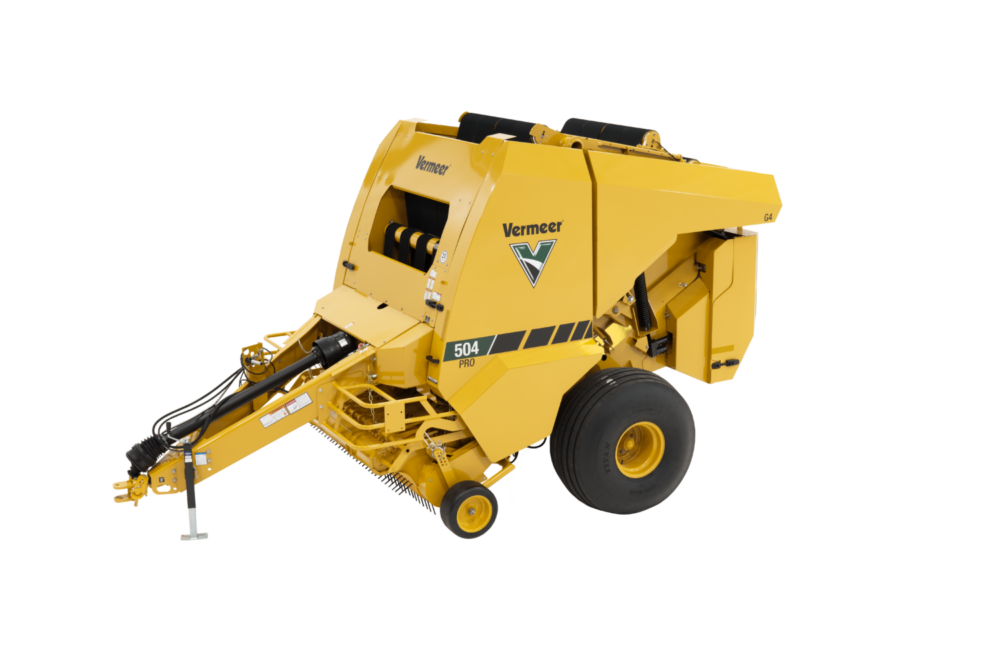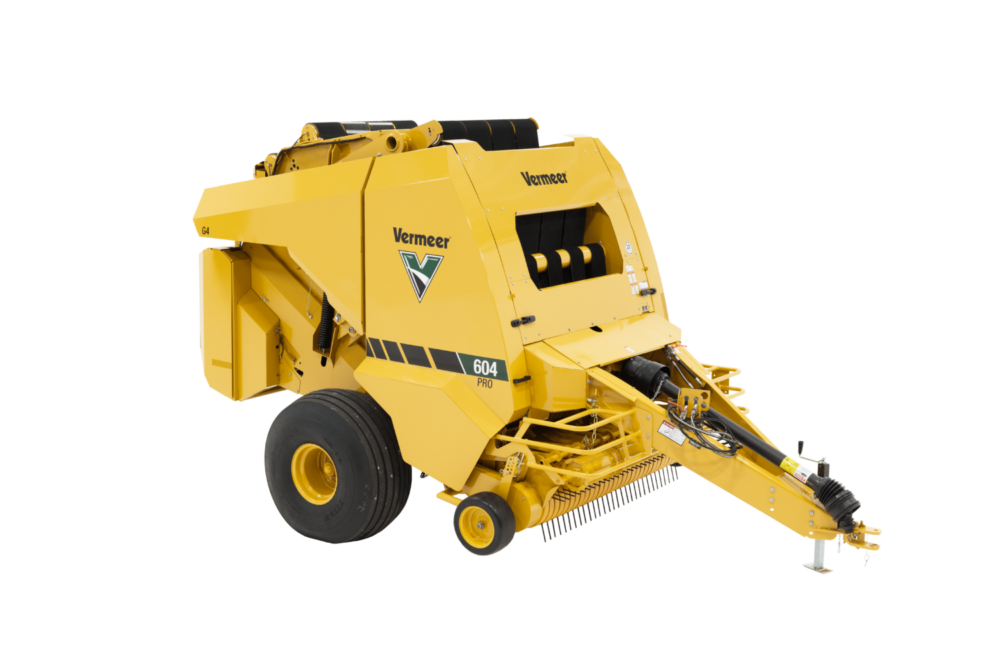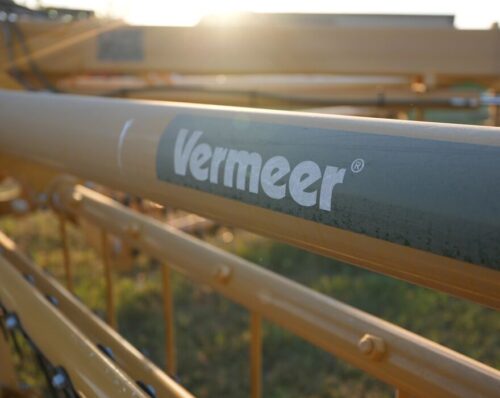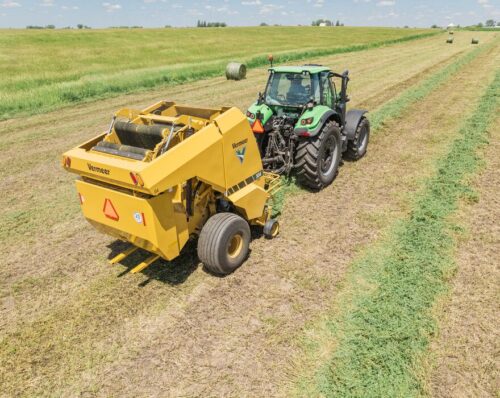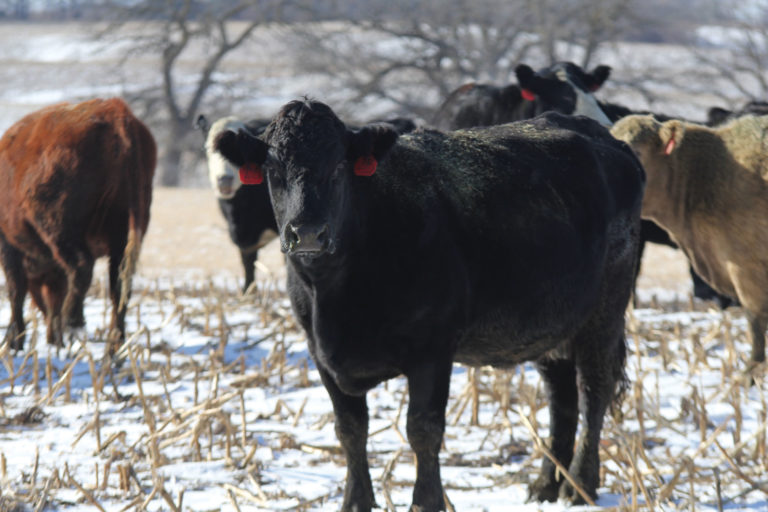
Meet Your Cows’ Nutritional Needs at Critical Stages
October 2018
What and how much you’re feeding your cows has a major influence on their productivity and overall health. Depending on several factors, finding that ideal ration is something of a moving target.
Beef cattle have distinctly different nutritional needs depending on the time of year and point at which the animals are in their gestation cycle. Characteristics like age, body size and milk output, as well as environmental factors like temperature and the terrain on which cattle spend their time, also influence the animals’ nutritional needs. Knowing your herds’ specific protein and energy needs at different stages can help you find the right specific feeding program and minimize overall feed costs in a time when prices and demand are high and supplies in many regions are low, experts say.
What Does a Cow Need?
It’s first important to identify the components that underlie a cow’s nutritional needs. Is she simply maintaining her body or accomplishing more with the nutrients she’s taking in? Maintenance, lactation, growth and reproduction are the four primary functions that affect nutritional requirements, according to John B. Hall, Virginia Cooperative Extension animal scientist, who led a research team from Virginia Cooperative Extension and Virginia Tech to examine the nutrition and feeding of cow-calf herds.
“By understanding the different factors that affect requirements, producers can make adjustments to changes such as a month of cold weather, moving to a hilly pasture or the last third of pregnancy,” according to a report from Hall and other Virginia Cooperative Extension researchers. “Even though all nutrients are needed for maintenance, only energy requirements are divided into maintenance and non-maintenance portions. This division is made because energy is used more efficiently for maintenance than for other body processes such as growth.”
Here’s more on those four key factors affecting nutritional needs.
- Growth. Though they depend on the basic increase in body mass, the composition of that increase is more important to cows’ nutritional needs in this phase, especially when it comes to protein. “Requirements for growth are determined by actual weight, average daily gain, weight at maturity and composition of gain. Composition of gain simply means whether cattle are putting on more muscle or more fat,” Hall said. “For example, protein requirements will be higher for young cattle because they are gaining more muscle than fat. When cows need to gain weight to increase their body condition score, this is also considered growth.”
- Maintenance. This is the basic energy the animal requires to do things like breathe, digest feed and maintain body weight. “The larger the animal, the greater its maintenance requirement, especially energy and protein. Extremely heavy-muscled breeds will have greater maintenance requirements than light-muscled breeds. Pregnancy and lactation increase basal metabolism (that’s required for basic body functions), so maintenance requirements are altered accordingly,” said Hall. “Heavy milking breeds have an increased maintenance requirement. Increased activity or rough terrain will increase maintenance energy needs as will extremely cold, hot, wet or muddy conditions.”
- Reproduction. Early on in a pregnancy, a cow’s nutritional needs aren’t much greater than when she is open. That changes later on. “Adjustments to requirements for reproduction are based on expected calf birth weight and stage of gestation,” according to Hall. “Usually, pregnancy does not significantly affect requirements until the last three months of pregnancy when the fetus is growing rapidly.”
- Lactation. This is the time between postpartum and weaning, including early on when she’s being bred back, when the cow is producing milk. “Nutrient requirements for lactation are based on the amount of milk at peak lactation and the composition of the milk,” Hall said. “Cows that produce more milk, and milk with more fat and protein, will have higher nutrient requirements.”
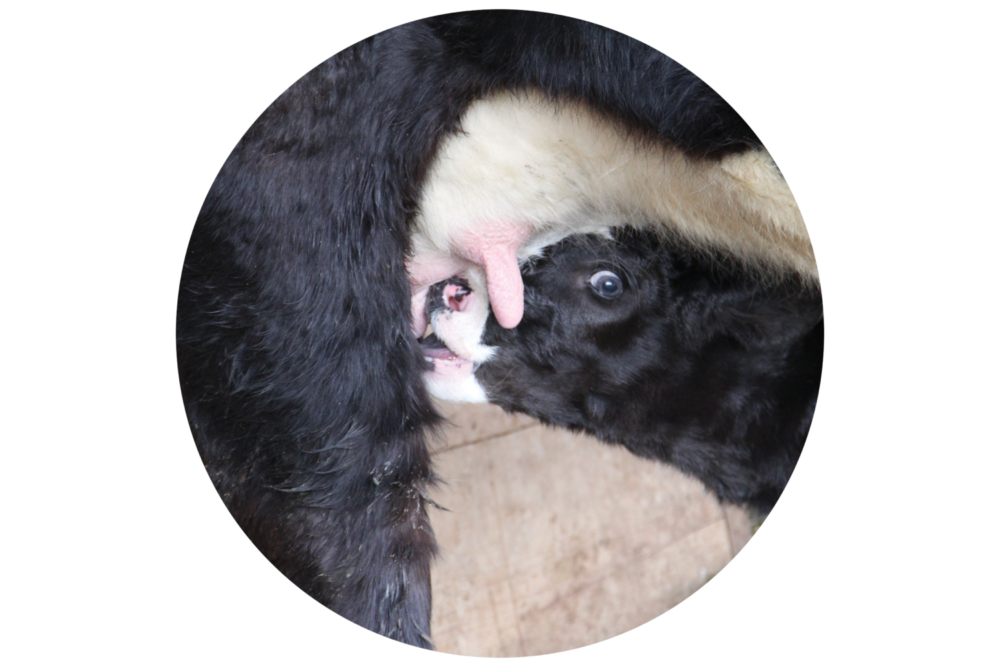
“When a cow calves and begins to lactate, she’s going to need more protein and energy as she gets into peak lactation. Typically, three months postpartum is when she’s giving just about as much as she can, and the calf is primarily dependent on her for nutrition. That’s when she’s going to need to eat more than at any other part of the cycle,” said Oklahoma State University Animal Science Professor Mark Johnson. “Once we get past that point, the calf’s rumen is fully functional and it’s just about weaned, so the cow’s lactation can taper off and she doesn’t need as much to eat. Once the calf is completely weaned and she goes dry, a basic maintenance diet will sustain her. Once she’s pregnant again, the gestating fetus doesn’t take a lot of additional nutrition to develop until about the third trimester, and that increase in nutritional needs is nothing like during peak lactation.”
Find the Right Feed Mix
Once you have the basic information, like a cow’s age and size, as well as her gestational phase, you have the basis for finding the ration that will provide the right mix of energy and protein. Each of the four major types of feed protein — crude, insoluble crude, adjusted crude and digestible protein — has a different rumen degradability that affects total amount necessary to meet a cow’s nutritional needs, according to a report from University of Nebraska Associate Dean of Extension and Beef Specialist Rick Rasby. The same is true with different energy types, though total digestible nutrients (TDN) make up the most common measurement for energy absorbed in a feed ration. Since feed moisture tends to dilute the nutrient concentration of a ration, dry matter (DM) is the most common unit for measuring total feed volume.
If you are feeding an open, pre-calving 1,100-pound (500 kg) cow, for example, she requires 22.7 pounds (10.3 kg) of feed with almost 55 percent total digestible nutrients and just over 8.5 percent crude protein to meet her nutritional requirements, according to Hall. If you have a feed source, like hay, that is 85 percent dry matter, that means it will meet all but 15 percent of her protein needs. Dividing 22.7 pounds (10.3 kg) by the percentage of dry matter (85 percent) in the intended feedstock yields a number of between 26.5 and 27 pounds (12 and 12.25 kg) of feed required per day to sustain her nutritional needs.1
For a 1,200-pound (544 kg) lactating cow, on the other hand, any of these options can meet her nutritional needs, according to Hall and his team2:
- 32 pounds (14.5 kg) of good hay plus one pound (.5 kg) of corn plus one pound (.5 kg) of protein supplement
- 32 pounds (14.5 kg) of fair hay plus five pounds (2.3 kg) of corn gluten pellets
- Spring pasture, good quality summer pasture or excellent stockpiled fescue
- 68 pounds (30.8 kg) of corn silage plus four pounds (1.8 kg) of protein supplement
Choosing from options like these are best done considering what’s most readily available, both in terms of the forage itself and the machinery to utilize it. In many cases, it’s a regional decision, according to Johnson.
“There’s not an ideal diet for a cow. That ruminant digestive system enables her to eat things no animal on earth can eat, because of her ability to digest fiber. In the Corn Belt, if you have dry cows and they can feed on cornstalks and basic crop residue until they calve, you can add a bit of protein supplement and make that ideal,” he said. “In places like Oklahoma where there are more native grasses that stand through the fall and winter months, dry cows can sustain themselves on that grass and not need much protein.”

Whether standing cornstalks, grasses or baleage or dry hay is the ideal primary feedstock, it’s important to recognize that geography and machinery make the management of every cow herd unique. That means every feeding decision should be specifically catered to each operation.
Machinery-wise, that means selecting the right tools like balers, bale processors, rakes and grinders that fit both your operation and the forage output you need. Vermeer 404/504/604 Pro balers are capable of handling heavy, wet forage and producing bales of varying density that can cater to a myriad of field and crop conditions.
The Vermeer lineup of balers, including the Pro series balers, 504 R-series balers and 604N/605N balers, can help producers best manage whatever feedstock they’re utilizing, especially when accounting for how you are feeding hay. Even for livestock customers who typically have specific forage requirements, those can change based on available supplies, making flexibility and versatility key success factors when serving as a feed provider.
“Some areas have cooler grasses that can sustain fall-calving herds. Turn cows out in November and by the time she hits peak lactation, she’s coming out of winter and those cool-season grasses are growing, giving her the ample vegetation she needs,” Johnson said. “There are all kinds of ways to feed cows, and there’s no one-size-fits-all solution.”

